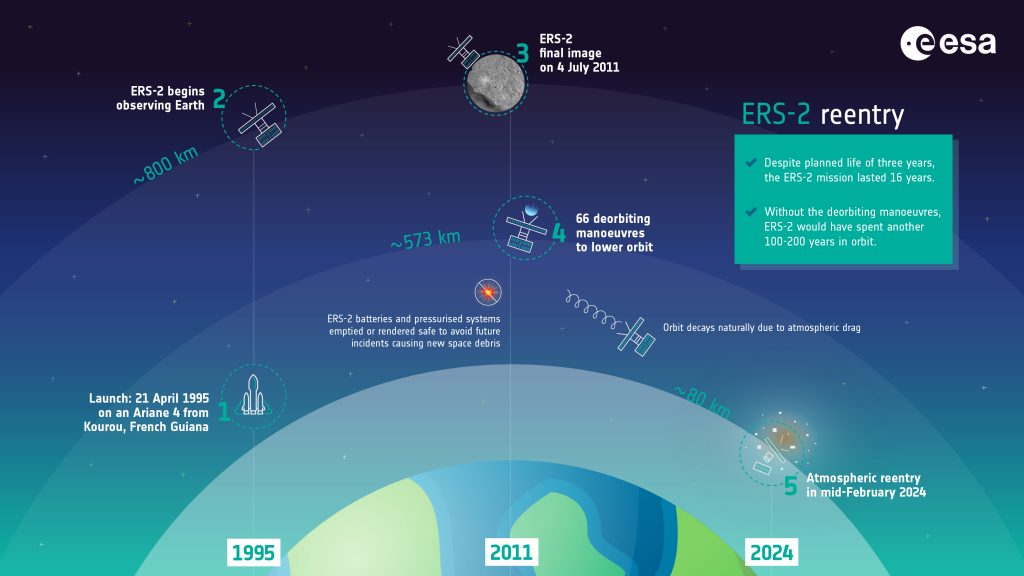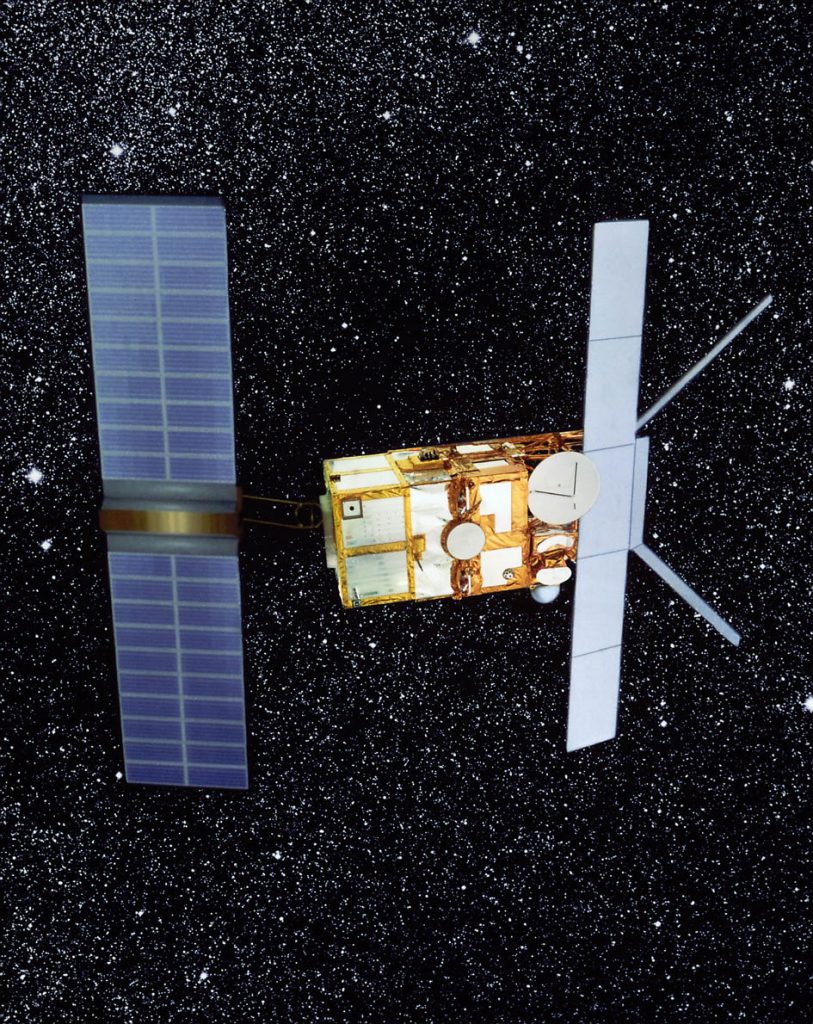The mission launched on 21 April 1995. At the time, it was the most sophisticated Earth observation spacecraft ever developed and launched by Europe. Together with the almost-identical ERS-1, it collected a wealth of valuable data on Earth’s land surfaces, oceans and polar caps and was called upon to monitor natural disasters such as severe flooding or earthquakes in remote parts of the world.
ERS-2 data are still widely used today and kept accessible through ESA’s Heritage Space Programme. More information about ERS-2 mission achievements can be found here.

In 2011, after 16 years of operations, ERS-2 was still functioning nominally but it was decided to end its operations and to deorbit the satellite to mitigate the proliferation of space debris. The satellite underwent a series of 66 deorbiting manoeuvres in July and August 2011, and was then completely passivated in September.

These manoeuvres used up the satellite’s remaining fuel and lowered its average altitude from 785 km to about 573 km in order to greatly reduce the risk of collision with other satellites or space debris and to ensure the satellite’s orbit would decay fast enough for it to reenter Earth’s atmosphere within the next 15 years.
That time has now come. ERS-2 will reenter Earth’s atmosphere in mid-February 2024.

As the spacecraft’s reentry is ‘natural’, without the possibility to perform manoeuvers, it is impossible to know exactly where and when it will reenter the atmosphere and begin to burn up.
ESA’s Space Debris Office is monitoring the satellite as its orbits decays and will provide regular updates in the days leading up to reentry on this blog, starting 5 February.
Click here for ‘ERS-2 reentry – live updates’
Click here for ‘ERS-2 reentry – frequently asked questions’

Discussion: 14 comments
Having been a ERS-2 Flight Dynamics team member from launch onwards, and also having been a part of he ERS-2 de-orbiting team, I am thankful for your efforts to keep the public informed about this final stage.
Despite being retired now, I love to keep contact with the missions of my past 🙂
Curious, why was ERS-2 not deorbited very much before this, in 2011? ~15 years seems unusual to me.
Because it broke down and couldn’t do the proper de-orbit manoeuvres.
I’m guessing they didn’t have enough fuel to completely deorbit it.
Lutz, congrats on your contribution to a successful mission.
My first job out of university was working for the UK’s Defence Research Agency who provided ESA with support for the ERS-2 Announcement of Opportunity. I worked with a couple of colleagues at ESTEC logging and sorting the proposals and sending them to the appropriate teams for review.
While in Noordwijk I had the chance to see ERS-2 in the clean room – a highlight of my first career.
Mixed feelings knowing that the mission is coming to a final conclusion after all that time. I’ll be following with interest.
Bon voyage, ERS-2.
While the time and location of ERS-2’s reentry are variable, I would have thought the approximate track over the surface at reentry would be know. I cannot find this information anywhere in these postings. Any help?
John, this is a link to a live tracker:
https://www.n2yo.com/?s=23560
Hope this helps. Per Ardua
Hoping it will be over the Isle of man so I can see it!
Natural reentry is near impossible to predict because of the multitude of parameters that are affecting its travel
I gladly remind my active time at space division in Ottobrunn when we display an ERS-2 model from ESTEC in front of municipal hall at Marienplatz Munich to support a space exhibition in the city. For me it was always important that space investments bring a benefit to environment and people on earth.
Many thanks for the information provided. I retired from ESA over thirty years ago, but interesting to think some spacecraft have lasted almost as long in their own retirement.
(OFSO, Ops/OD, ESOC)
My bachelor thesis work was on ERS-2 SAR data processing, I am simply thankful as it was the first satellite data I have worked with and it was of great inspiration to continue my studies.
I have video of this reentry – Came out of the western night sky . I posted it on my FB page. Whittier Calif 90605.